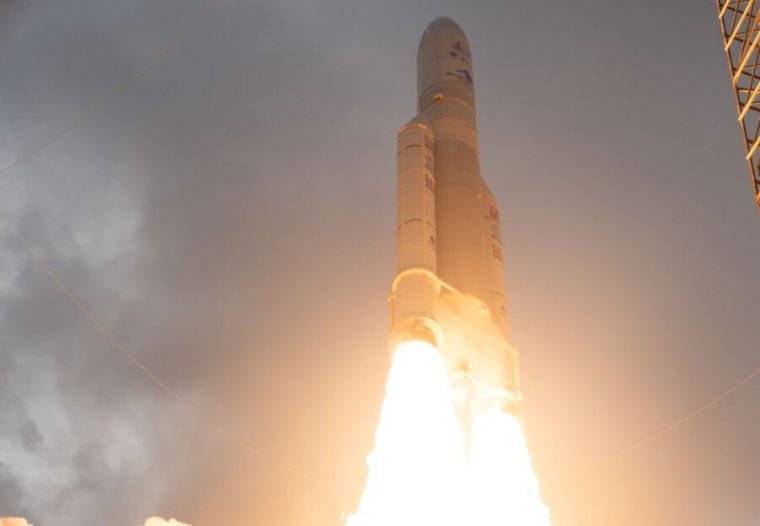Nine days after the launch of the James Webb Space Telescope, NASA says it has made good progress deploying the $10 billion instrument and has now begun the critical process of "tensioning" the sunshield.
On Monday, six motors on board the telescope began the process of fully extending the first of five layers of the sunshield. These tennis-court sized layers, each made of a polyimide film called Kapton, will shade the instrument and allow it to cool down to 50 Kelvin, which is -223 degrees Celsius and just 50 degrees above absolute zero. This cold environment is critical for Webb to observe infrared light and detect heat from very distant objects.
NASA's Webb project manager, Bill Ochs, said the first of these five layers should be completely deployed by the end of Monday. The goal is to extend the other four layers on Tuesday and Wednesday. After this time, the massive sunshield—the most complex aspect of an intricate deployment process—will be complete.
"I don't expect any drama," said Ochs of the next few days during a teleconference with reporters on Monday.
Following this sequence, NASA will be most of the way there. All told, from launch through commissioning, the Webb instrument must undergo 344 actions where a single-point failure could scuttle the telescope. Following sunshield deployment, Ochs said the Webb instrument will be through "70 to 75 percent" of these single-point failures.
The other major activities yet to be completed are the deployment of the secondary mirror support structure and the unfolding of the second of Webb's primary mirror wings. These activities could both be finished by this weekend and would effectively complete the deployment phase.
Although science operations will not begin until mid-2022, NASA engineers and thousands of scientists will then start to breathe a sigh of relief. It took 20 painstaking years to get Webb into space, and after fewer than 20 days, the telescope will either be fully deployed—or it won't.
As part of the deployment process, teams of engineers and scientists at NASA and the telescope's primary contractor, Northrop Grumman, have been working 12-hour shifts since the Christmas Day launch on an Ariane 5 rocket. Over the weekend, the teams worked on two relatively minor issues, said Amy Lo, the James Webb Space Telescope alignments engineer at Northrop.

The first issue concerned the performance of the telescope's 6-meter-wide solar array. Although the observatory was never "power starved," Lo said the original configuration of the five panels proved not to be optimal. To reach full power, she said, the array was rebalanced, and they are now performing as intended. This is not expected to be an issue going forward.
The other potential problem concerned the six motors involved in the tensioning process. They were "running a bit hot," Lo said, but after the telescope was repositioned to keep them cooler, they are at 327 Kelvin, well below the operating limit of 340 Kelvin. Lo said she expects the motors to remain under the limit during the next three days.



3175x175(CURRENT).thumb.jpg.b05acc060982b36f5891ba728e6d953c.jpg)

Recommended Comments
There are no comments to display.
Join the conversation
You can post now and register later. If you have an account, sign in now to post with your account.
Note: Your post will require moderator approval before it will be visible.